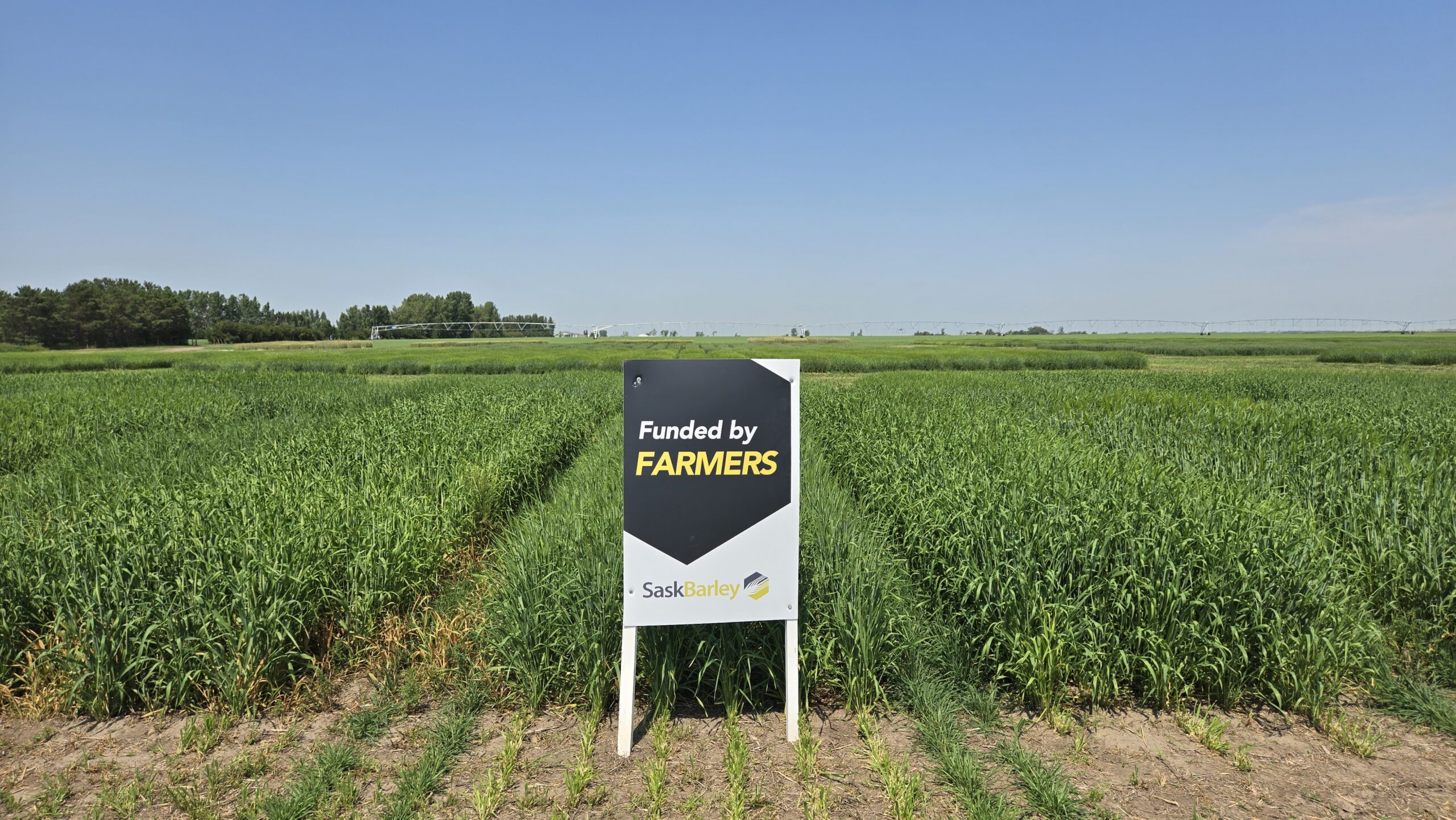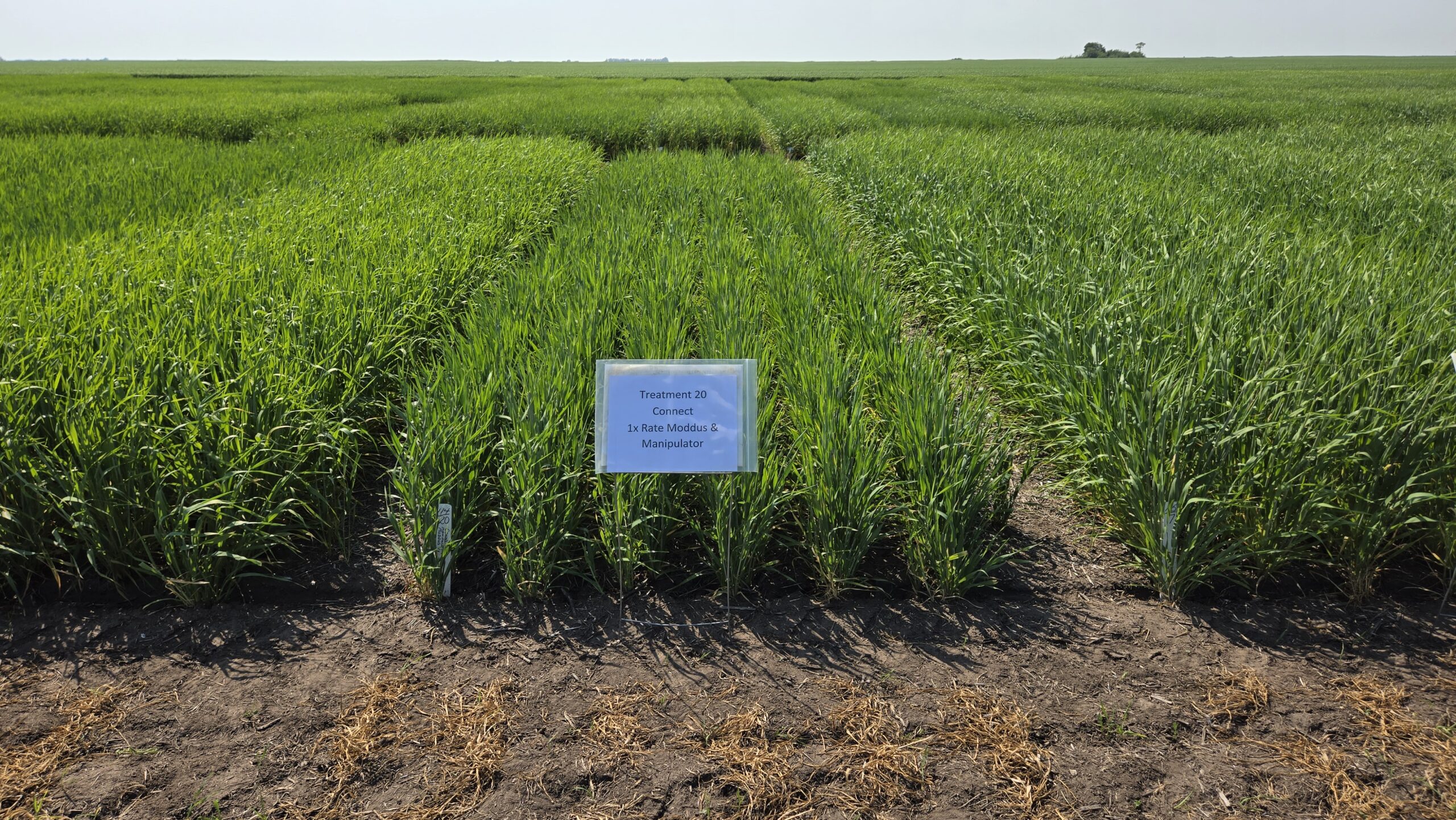Advancing Barley: A Look at SaskBarley’s 2024 Research Projects
By Mitchell Japp, Research & Extension Manager
Niche barley varieties, mixing plant growth regulators and pre-harvest sprouting resistance projects are just a few of the protocols we’re investigating at Agri-ARM sites across the province this summer. These topics have been top of mind at SaskBarley over the past winter. We’ve been working with partners at the Agri-ARM sites and the Saskatchewan Ministry of Agriculture to develop ideas into projects.
Explore SaskBarley’s 2024 Research Projects:
The Saskatchewan Ministry of Agriculture (The Ministry) has supported two of these ideas through the Agriculture Demonstration of Practices and Technologies (ADOPT) program for one-year projects at several sites, leveraging SaskBarley’s investment. SaskBarley and The Ministry are also supporting a Strategic Field Program project to evaluate over 30 barley varieties for their resistance to pre-harvest sprouting.
Assessing barley varieties for Pre-Harvest Sprouting resistance
The project “Generating Pre-Harvest Sprouting Ratings for Barley Varieties” has a fairly transparent overarching objective, to determine which barley varieties have improved resistance to pre-harvest sprouting. The project is an integrated partnership with Ministry staff, who led the development of the project – Matthew Struthers and Allie Noble, and Dr. Gursahib Singh who is leading the research at the Irrigation Crop Diversification Centre in Outlook. Dr. Singh is coordinating the other Agri-ARM locations that are growing the trial as well.

The trial will run for two years. It involves planting more than 30 varieties, and then delaying harvest to allow time for sprouting to occur. Multiple harvest dates will allow the researchers to determine the difference in sprouting over time for each variety compared to susceptible and resistant check varieties. The methodology to test for differences in pre-harvest sprouting is adapted from similar tests done in wheat that are used to generate resistance ratings in the SaskSeed Guide. The intention is to generate similar data for barley varieties.
Exploring the effects of mixing Plant Growth Regulators in barley
The mixing plant growth regulators project idea came from a discussion with students at the College of Agriculture and Bio-Resources. The idea is to compare full and half rates of chlormequat chloride (Manipulator) and trinexapac ethyl (Moddus) with mixtures of each to see if it influences plant height, lodging and grain yield. The idea is based on some observations that have been made about the crop safety, response and efficacy with individual products and practices in Europe and elsewhere that have found benefits to mixing the products. Mixing PGRs is not registered, so the first step is to test it in small plot research to learn what the risks and potential rewards may be. This one-year trial “Plant Growth Regulator Products and Mixes to Improve Crop Safety and Efficacy in Barley” is being led by Chris Holzapfel at the Indian Head Agriculture Research Foundation and is funded by ADOPT.

Demonstrating new food uses of novel and niche barley varieties
We are very familiar with the most common uses of barley – feed and malt. Food barley is less common, but some new varieties have been registered or supported for registration recently that will be grown in our one-year “Demonstration of novel and niche barley varieties”. This ADOPT funded is being led by Ishita Patel at Northeast Agriculture Research Farm in Melfort and grown at several locations. The trial will include some established food barley varieties, and will be compared with new varieties, including a purple barley. Some malt and feed, as well as one forage variety will be included. Once harvest is complete, the grain will be processed and some food samples will be prepared for sampling at future SaskBarley events.
At least one of these projects will be grown at every Agri-ARM site this year. So, check out their tours. If these stops aren’t featured on the tour, we’ll have results during the winter to share with you.
These projects are funded by the Saskatchewan Ministry of Agriculture’s Strategic Field Program and ADOPT program (Agricultural Demonstration of Practices and Technologies), which includes contributions from the Government of Saskatchewan and Government of Canada under the Sustainable Canadian Agricultural Partnership and SaskBarley.








